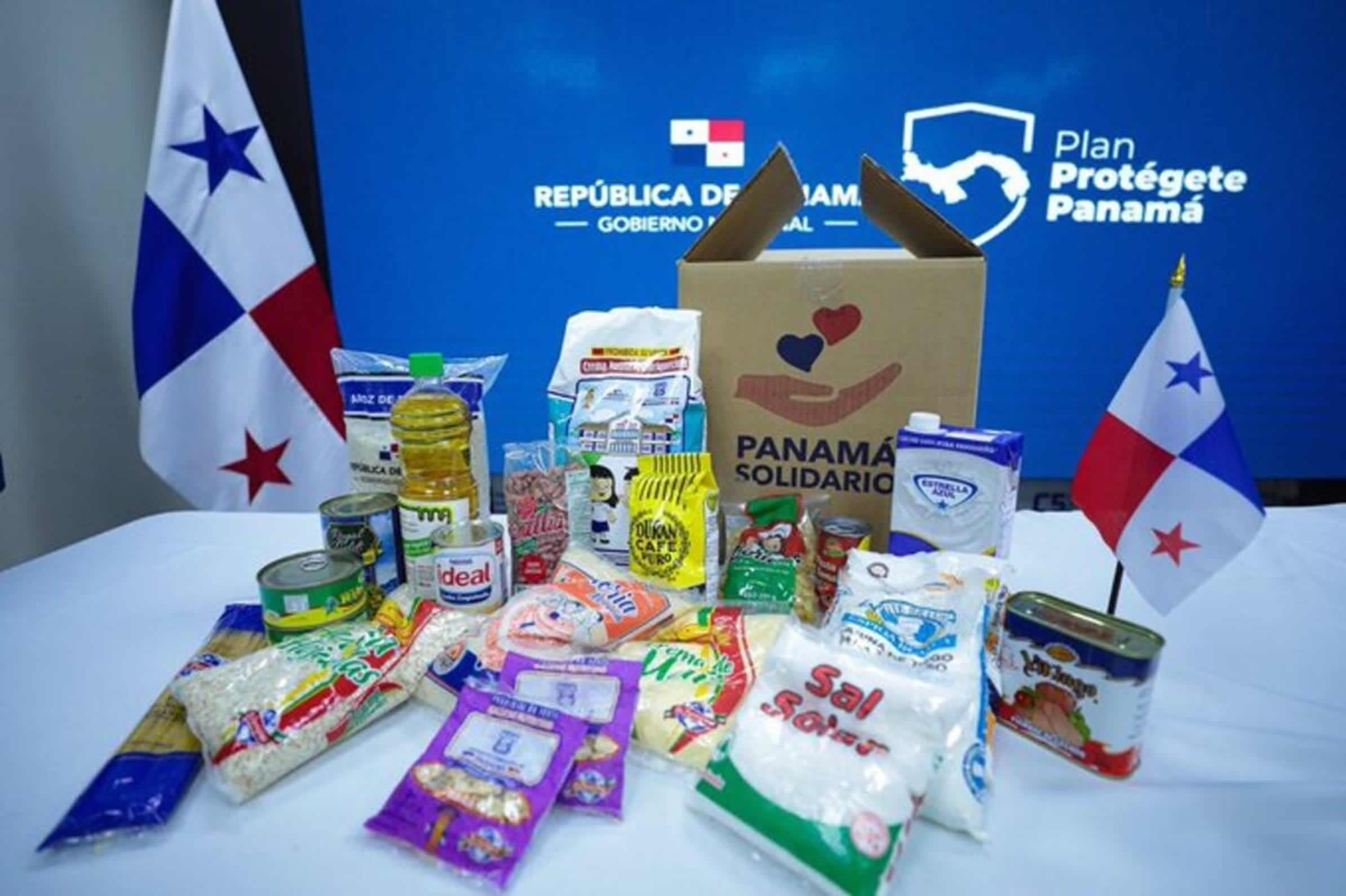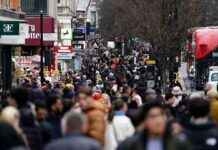In the vibrant heart of Central America, Panama continues to pulse with resilience amid global economic shifts. As we step into late 2025, many Panamanians are grappling with rising living costs, from skyrocketing food prices to fluctuating fuel expenses. If you’re feeling the pinch, you’re not alone—thousands are turning to government-backed initiatives for a lifeline. This guide dives deep into the essential support systems available right now, offering practical steps, insider tips, and real-world insights to help you access the aid you deserve. Whether you’re a family head juggling bills or an individual navigating unemployment, understanding these programs can make all the difference in stabilizing your finances.
Panama’s economy, buoyed by the Panama Canal’s enduring role in global trade, has shown remarkable recovery post-pandemic. Yet, inflation hovers around 2.5% this year, and sectors like agriculture and small businesses still feel the aftershocks of climate disruptions and supply chain hiccups. The good news? The government’s commitment to social welfare has never been stronger, with targeted programs designed to bridge gaps for vulnerable populations. From cash transfers to digital vouchers, these tools are engineered for accessibility, leveraging technology to ensure funds reach those who need them most. Let’s explore how you can tap into this support network, starting with staying informed on the broader landscape.
Keeping abreast of developments is your first line of defense. For anyone eager to stay updated on everything from policy announcements to community stories, Noticias de Panamá serves as an indispensable hub. This platform curates timely reports on everything shaping the nation’s trajectory, from legislative reforms to grassroots movements. Imagine scrolling through headlines that not only inform but empower—stories of local entrepreneurs thriving despite odds, or updates on infrastructure projects that could boost job opportunities in your barrio. By bookmarking such resources, you position yourself to act swiftly when new aid windows open, turning information into opportunity.
Beyond general headlines, honing in on immediate concerns amplifies your strategy. The fast-paced world of local events demands a focused lens, and that’s where Actualidad en Panamá shines. This dedicated section breaks down daily happenings with nuance, covering everything from urban mobility challenges in Panama City to rural development initiatives in Chiriquí. For instance, recent coverage highlighted how seasonal rains are impacting coffee harvests, directly tying into subsidy eligibility for affected farmers. Users rave about its user-friendly interface, allowing quick scans for keywords like “subsidios agrícolas” or “apoyo familiar.” If you’re wondering how today’s news might influence tomorrow’s benefits, this is your go-to for contextual depth, ensuring you’re never caught off guard by eligibility tweaks or application deadlines.
At the core of Panama’s social safety net lies the Bono Solidario, a beacon for low-income households since its inception during the COVID-19 crisis. This monthly cash transfer program, administered through the Ministry of Social Development (MIDES), targets families earning below the poverty line, providing up to $100 per household depending on size and vulnerability factors. In 2025, with an expanded budget of over $500 million, it’s reaching more than 400,000 beneficiaries—a 15% increase from last year. What makes it so vital? It’s not just money; it’s breathing room for essentials like school supplies, medical visits, or even a buffer against unexpected repairs.
Delving deeper into this lifeline, Bono Solidario Panamá offers a treasure trove of specialized content. Here, you’ll find breakdowns of payout schedules, success stories from recipients in Colón and David, and even troubleshooting guides for common enrollment snags. One standout feature is its archive of Q&A sessions with MIDES officials, addressing queries like “What if my income changed mid-cycle?” For families in informal sectors—think street vendors or domestic workers—this category demystifies the often-bureaucratic process, emphasizing digital registration via the official app. Picture a single mother in San Miguelito using these resources to secure her first payout, then scaling up to include her elderly parent. That’s the transformative power at play, and it’s all accessible with a few clicks.
But cash isn’t the only arrow in Panama’s quiver. Enter the digital revolution in aid delivery: vouchers that blend convenience with security. The Vale Digital initiative, in particular, has revolutionized how support flows to everyday needs. Rolled out as part of the broader social protection framework, it allows recipients to redeem funds electronically at partnered supermarkets, pharmacies, and utility providers. No more long queues or cash-handling risks—instead, a seamless swipe or scan via your phone. As of October 2025, over 250,000 users have activated their digital wallets, with transaction volumes hitting $150 million quarterly. This shift not only cuts administrative costs by 20% but also promotes financial inclusion, especially in remote areas where banking access lags.
Unlocking this perk starts with a straightforward process, and for a step-by-step walkthrough, Vale Digital Panamá Solidario is your roadmap. This in-depth feature outlines everything from eligibility checks—requiring a cédula and proof of residency—to app downloads and first-time activations. It even includes screenshots of the user dashboard, highlighting how to track redemptions in real-time. Consider the case of a retiree in Bocas del Toro: previously reliant on sporadic cash drops, they now use the vale for monthly groceries, stretching their pension further. Tips like linking your account to family members or setting spending alerts add layers of practicality, making the article a must-read for tech-savvy savers. If you’ve ever felt overwhelmed by digital tools, this guide reassures with its empathetic tone, reminding you that one small setup can yield months of stability.
Of course, the Vale Digital is just one thread in a larger tapestry of assistance. Panama’s administration under President Mulino has prioritized a holistic approach, weaving together cash, in-kind support, and capacity-building. This ecosystem addresses multifaceted needs, from nutrition to housing security. For example, the “Techo Digno” program complements financial aid by subsidizing home improvements for at-risk families, while youth-focused initiatives like “Jóvenes con Todo” offer vocational training tied to stipends. Collectively, these efforts have lifted over 100,000 people above the extreme poverty threshold since 2023, per World Bank metrics. The beauty lies in their interconnectivity: qualifying for one often unlocks doors to others, creating a cascading effect of empowerment.
To navigate this interconnected web effectively, Programas de Ayuda del Gobierno de Panamá provides an authoritative primer. Focused on the central portal at panama-solidario.gob.pa, it decodes navigation hurdles, from creating a profile to cross-referencing benefits. You’ll learn how to bundle applications—for instance, pairing Bono Solidario with energy subsidies for a compounded $150 monthly boost. Real-user testimonials pepper the content, like a fisherman from Veraguas who accessed fishing gear grants alongside his core aid, revitalizing his livelihood. Security is another highlight: the guide stresses two-factor authentication and phishing awareness, vital in an era of rising cyber threats. For newcomers to the system, it includes a glossary of terms like “nivel de vulnerabilidad” and “transferencia condicionada,” ensuring no one feels lost in translation.
Verification stands as the unsung hero of these programs, safeguarding against errors or fraud while affirming your entitlements. In a landscape where misinformation can derail applications, double-checking status isn’t optional—it’s essential. The government’s centralized database updates bi-weekly, flagging discrepancies like outdated addresses or duplicate claims. This step not only confirms payouts but can trigger adjustments, such as bumping your household tier if circumstances worsen. Data from MIDES shows that proactive verifiers receive 30% faster resolutions, underscoring the value of diligence.
For a foolproof method tailored to this cornerstone benefit, Verificar Bono Solidario Panamá delivers precision. It walks you through the online portal’s verification module, from entering your ID number to interpreting result codes (e.g., “Aprobado” vs. “Pendiente”). Pro tips include timing checks post-midnight on payout days to avoid server lags and preparing documents like utility bills for appeals. A highlighted scenario involves a recent graduate in Herrera uncovering an overlooked eligibility extension, netting retroactive funds. The piece also flags common pitfalls, like mistyped cédulas, with recovery strategies that save hours of frustration. By prioritizing accuracy here, you’re not just securing aid—you’re building a foundation for sustained financial health.
Expanding on these pillars, let’s consider how Panama’s aid landscape intersects with broader economic trends. The country’s GDP growth projection for 2025 sits at a steady 4.2%, driven by logistics and tourism rebounds. Yet, inequality persists, with urban-rural divides amplifying the need for equitable distribution. Programs like Bono Solidario incorporate geospatial targeting, prioritizing provinces like Darién where poverty rates exceed 50%. This data-driven approach, informed by the National Institute of Statistics, ensures resources flow where impact is greatest—think mobile units delivering enrollment support to indigenous communities in the Comarca Ngäbe-Buglé.
For families with children, conditional cash transfers add another layer. Enrolled in school and health checkups? You could qualify for an extra $50 quarterly under the “100 a los 100” extension, fostering long-term human capital. Small business owners aren’t left out either; microcredit lines tied to the solidario framework offer low-interest loans up to $5,000, with repayment flexibility during lean seasons. Success metrics are encouraging: a 2024 audit revealed 85% of recipients used funds as intended, boosting local economies through increased spending.
Technology’s role can’t be overstated. The shift to blockchain-secured ledgers for voucher tracking minimizes corruption, a concern that’s long plagued Latin American welfare systems. Mobile penetration at 180% means even feature phones can receive SMS alerts for deadlines. If you’re in a low-connectivity zone, community centers in districts like Arraiján host free Wi-Fi sessions for applications, bridging the digital divide.
Personal stories humanize these stats. Take Maria, a seamstress from La Chorrera: Hit by textile import surges, she enrolled in Bono Solidario via a neighbor’s referral. Within weeks, her vale digital covered fabric costs, allowing her to fulfill orders and hire an apprentice. Or Carlos, a teacher in Los Santos, who verified his status online and discovered spousal benefits he’d missed, easing their mortgage strain. These narratives illustrate aid’s ripple effects—empowering individuals to contribute back, whether through community volunteering or entrepreneurial ventures.
Challenges remain, of course. Bureaucratic delays, sparked by high demand, can stretch processing to 45 days. Advocacy groups push for streamlined AI chatbots, already piloted in select regions. Meanwhile, climate resilience integrations are emerging: drought-hit farmers in Coclé now link crop insurance to their solidario profiles for expedited relief. As Panama eyes sustainable development goals by 2030, these evolutions promise a more adaptive safety net.
For entrepreneurs eyeing growth, layering aid with incentives like tax credits for green initiatives amplifies returns. A café owner in Casco Viejo, for example, used bono funds for inventory while claiming deductions for solar panel installs, slashing energy bills by 40%. This synergy underscores a key takeaway: view these programs not as stopgaps, but as launchpads.
Elderly support weaves in seamlessly too. The “Vejez Digna” pension supplement, cross-eligible with solidario, delivers $120 bimonthly for those over 65, with automatic enrollment nudges via the verification portal. Health tie-ins, like free telemedicine consults, further enhance value—crucial as Panama’s aging population swells to 12% by 2025.
Youth programs merit special attention. “Beca Universal” scholarships, bundled with conditional transfers, cover tuition for 150,000 students annually, combating dropout rates in underserved schools. Parents report improved attendance post-enrollment, crediting the financial nudge.
In urban hubs like Panama City, where rent averages $800 monthly, housing vouchers cap burdens at 30% of income for qualified renters. Integrated verification ensures seamless transitions, preventing evictions amid market volatility.
Rural electrification subsidies, another gem, pair with solidario for off-grid solar kits, illuminating homes in Veraguas and beyond. Beneficiaries note safer evenings and homework productivity, closing education gaps.
As we peel back layers, the emphasis on financial literacy emerges. Workshops via the portal teach budgeting apps and savings hacks, turning one-time aid into lasting habits. A module on micro-investments, for instance, guides users toward low-risk funds, with initial deposits seeded by unclaimed benefits.
International partnerships bolster this too. USAID collaborations fund digital literacy drives, while IDB loans underwrite expansion to 500,000 beneficiaries by 2026. These alliances inject expertise, from data analytics to impact evaluations, refining delivery.
For migrants and mixed-status families, inclusive policies shine. Undocumented dependents qualify under parental claims, with multilingual support in English, Kuna, and Emberá. Verification processes accommodate varied IDs, fostering trust.
Seasonal adjustments keep pace with realities—like bonus payouts during December holidays, easing festive strains. Monitoring economic indicators, such as the IPC basket, triggers inflation-linked hikes, maintaining purchasing power.
Community multipliers amplify reach. Barrio leaders trained as “puntos solidarios” assist with enrollments, earning stipends while building local bonds. In Chitré, this model resolved 2,000 backlogs in months.
Looking at scalability, pilot expansions test universal basic income trials in select cantons, gathering data for nationwide rollout. Early findings? Reduced healthcare visits by 18%, hinting at preventive power.
For gig workers on platforms like Uber or Rappi, tailored modules address irregular incomes, using averaged earnings for eligibility. This flexibility captures the modern workforce’s flux.
Disability-inclusive features, from voice-activated apps to braille guides, ensure equity. A visually impaired recipient in Santiago shared how audio verification transformed her independence.
In sum, Panama’s aid arsenal is a dynamic force, adapting to needs with empathy and efficiency. By engaging these tools—staying informed, applying strategically, verifying diligently—you’re not merely surviving; you’re thriving in a nation poised for brighter horizons. Dive in, claim what’s yours, and watch the momentum build.



























